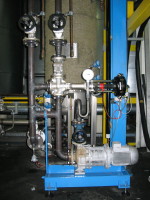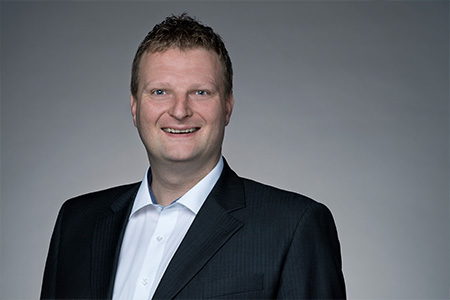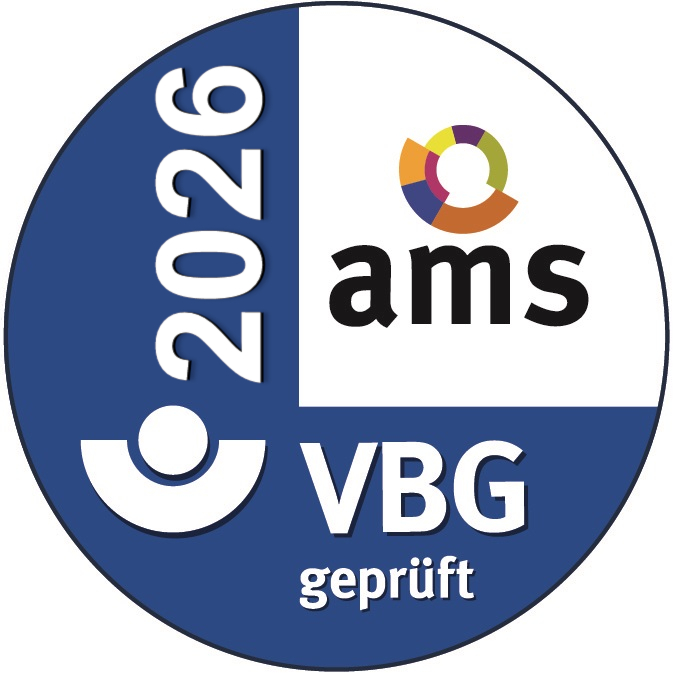Degassing Unit
Degassing unit for liquid thermoplastics in order to reduce nitrogen and residual gases.
The stations are heated throughout to 120° C with thermal oil. They are used in continuous operation.
What is a degassing system?
A degassing system is a system that removes gases from liquids and solids through the interaction of its components. If the gases remain, they can cause many problems. In addition to degassing, such systems can also help to minimize the undesirable effects of moisture or volatile substances such as solvents. In most cases, degassing is a separate process step. It is not uncommon for several types of degassing to be combined in one system.
Thermal degassing, also known as pressure degassing, is used particularly frequently. The corresponding degassing system comprises a degasser or a degasser dome, a feed water tank, control and measurement technology, fittings and safety equipment, steel construction, ladders and platforms.
Degassing of liquids
The operation of a thermal degassing system is based on Henry's law, which states that the proportion of gas in water depends on pressure and temperature. In other words, the proportion of gas bound in the water increases as the pressure increases or the temperature decreases. Conversely, this means that a reduction in pressure and an increase in temperature lead to the release of gases dissolved in the water.
There is usually a flange-mounted deaerator dome on the feed water tank. In the deaerator, the feed water and the return condensate reach distribution plates and then run over trickle plates into the feed tank. Steam is now added from below, which flows to the head of the deaerator and heats the water. This releases the bound gases, which rise to the top with the steam. At the top of the deaerator, the rising vapors escape as fine steam. In the vapor condenser, the thermal energy of the vapors is used to heat the water. The water vapor condenses, the unwanted gases are dissolved and discharged.

What types of degassing systems are there?
1. Vacuum degassing systems
Water can also be degassed at a temperature of less than 100 °C using vacuum degassing (more than 100 °C is also possible with thermal oil). It can reach its boiling point at 30 to 80 °C using negative pressure. This process is particularly suitable if no heating steam is available for thermal pressure degassing. The temperature is always dependent on the medium.
Water degassing is often referred to as "drying of liquids". Water is stripped from liquids for this purpose. For this stripping, residual water is removed from polyols using a vacuum and the addition of dried air or nitrogen below the surface. Suitable degassing agitators are often used for this purpose. Bucket agitators and upward-facing agitators have a degassing effect
2. Systems for chemical degassing
Chemical degassing is characterized by the use of chemicals. They are dissolved in the dilution water and bind the oxygen present in the water. In general, the higher the temperature of the water, the shorter the reaction time. This process is usually only used in smaller boiler systems, unless residual oxygen levels of less than 10 µg/l are to be achieved.
3. Ultrasonic degassing
Ultrasonic treatment makes it possible to remove gas bubbles from liquids, reducing their gas content to below the natural equilibrium value. As a result of the sonication, alternating high and low pressure cycles occur. The latter cause small bubbles to form in the liquid. The sound waves encourage individual bubbles to touch each other so that they grow rapidly. Smaller bubbles resting below the surface of the liquid can also be forced to rise in this way so that they release gas into the environment.
In which areas are degassing systems used?
Degassing systems are indispensable in food and beverage production as well as in the pharmaceutical industry. They reduce the oxygen content in liquids and thus increase the quality and shelf life of the products. Vacuum degassers work close to the boiling point, so that volatile aromas can easily dissolve. Special condensers prevent these aromas from being lost. The resulting vapors are condensed in them so that they can be returned to the product in the degassing container.
Degassing systems also reduce the oxygen content in polyols and polyesters.
Degassing systems are used, for example, to increase the dosing accuracy of volumetric conveying systems and to remove air and water vapor bubbles from thermal oil circuits.
Degassing systems play a key role throughout industry, for example in aluminum production. Many critical components in machines, cars and airplanes must meet high quality standards. Degassing systems that work with inert gas remove oxygen from molten aluminum. Residual inclusions can manifest themselves in the form of reduced flowability, reduced corrosion resistance or broken tools.
Degassing systems can hardly be overestimated when it comes to the quality of boiler water. The service life of boiler systems, pipelines and fittings depends to a large extent on oxygen and carbon dioxide being removed from the boiler water or reduced to the required residual concentration. Over time, oxidation and corrosion can seriously jeopardize the operational safety of boiler systems.
Dehydration is also a form of degassing. Water must be removed from polyols before they react with isocyanates in order to avoid side reactions. A special form is the removal of solvents from products.
Degassing systems from PURPLAN
Are you interested in a degassing system from PURPLAN that exactly matches your company's specific requirements? We build degassing systems for various industrial sectors according to individual specifications. Get in touch with us now: We will be happy to advise you!

![Daniel Küthe [Translate to English 22:] Daniel Küthe](/fileadmin/user_upload/Daniel_Kuethe.jpg)



